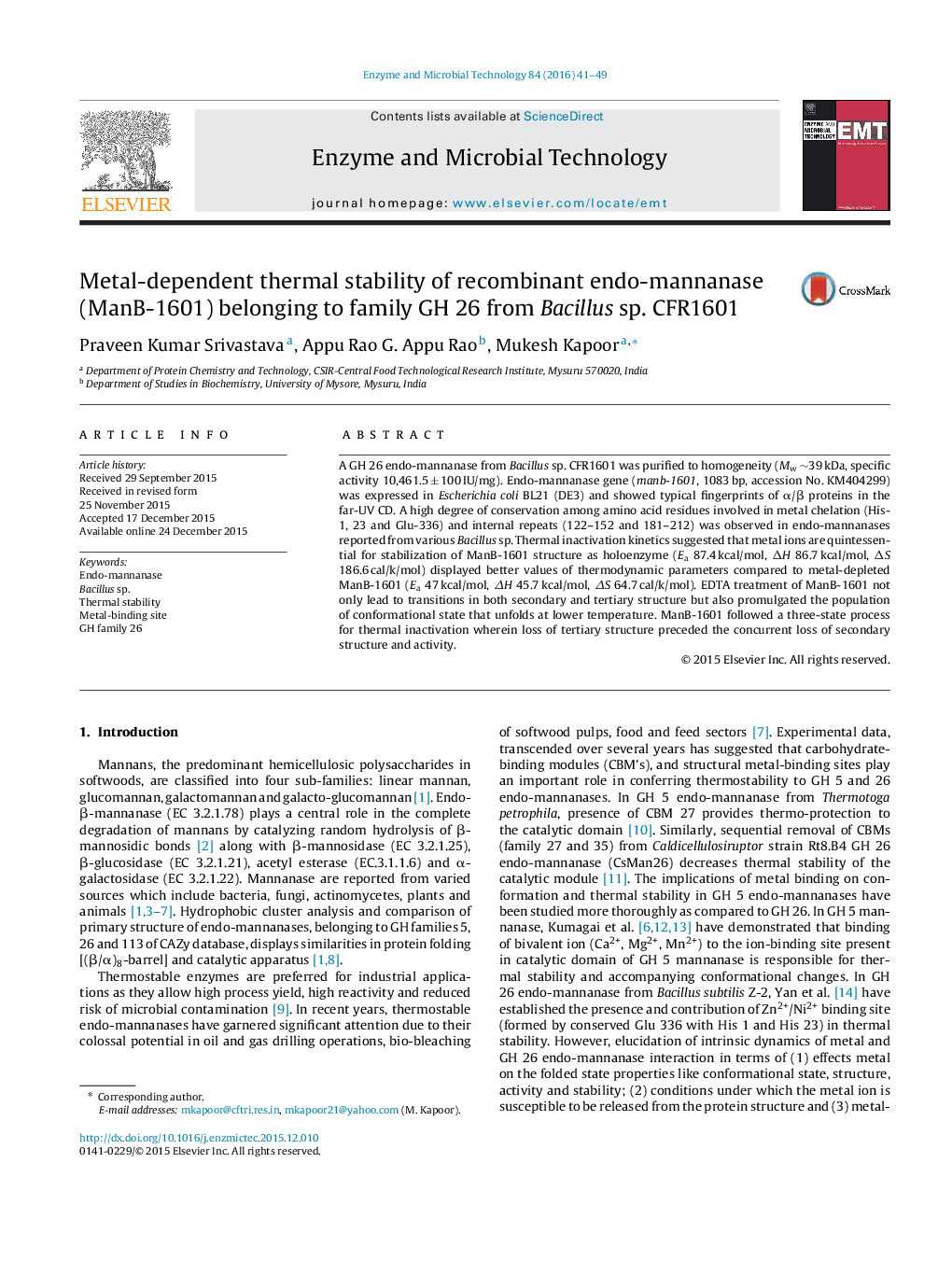| Article ID | Journal | Published Year | Pages | File Type |
|---|---|---|---|---|
| 16825 | Enzyme and Microbial Technology | 2016 | 9 Pages |
•A mannanase from Bacillus sp. CFR1601 was purified with high specific activity.•Endo-mannanase (ManB-1601) gene was heterologously expressed.•Long and short range interactions contributed to ManB-1601 thermostability.•EDTA induced subtle transitions in ManB-1601 secondary and tertiary structure.•The stability of endo-mannanase at high temperatures is metal dependent.
A GH 26 endo-mannanase from Bacillus sp. CFR1601 was purified to homogeneity (Mw ∼39 kDa, specific activity 10,461.5 ± 100 IU/mg). Endo-mannanase gene (manb-1601, 1083 bp, accession No. KM404299) was expressed in Escherichia coli BL21 (DE3) and showed typical fingerprints of α/β proteins in the far-UV CD. A high degree of conservation among amino acid residues involved in metal chelation (His-1, 23 and Glu-336) and internal repeats (122–152 and 181–212) was observed in endo-mannanases reported from various Bacillus sp. Thermal inactivation kinetics suggested that metal ions are quintessential for stabilization of ManB-1601 structure as holoenzyme (Ea 87.4 kcal/mol, ΔH 86.7 kcal/mol, ΔS 186.6 cal/k/mol) displayed better values of thermodynamic parameters compared to metal-depleted ManB-1601 (Ea 47 kcal/mol, ΔH 45.7 kcal/mol, ΔS 64.7 cal/k/mol). EDTA treatment of ManB-1601 not only lead to transitions in both secondary and tertiary structure but also promulgated the population of conformational state that unfolds at lower temperature. ManB-1601 followed a three-state process for thermal inactivation wherein loss of tertiary structure preceded the concurrent loss of secondary structure and activity.
Graphical abstractFigure optionsDownload full-size imageDownload as PowerPoint slide
